How to Apply Local Group Policies to Specific User in Windows 10
The Local Group Policy Editor (gpedit.msc) is a Microsoft Management Console (MMC) snap-in that provides a single user interface through which all the the Computer Configuration and User Configuration settings of Local Group Policy objects can be managed.
Multiple Local Group Policy is a collection of Local Group Policy objects (LGPOs) designed to provide improved management for computers that are not part of a domain. This collection consists of the following LGPOs:
- Local Computer Policy - This LGPO applies policy settings to the computer and any users logging on to the computer. This is the same LGPO that was included in earlier versions of Microsoft Windows.
- Administrators Local Group Policy - This LGPO applies user policy settings to members of the Administrators group.
- Non-Administrators Local Group Policy - This LGPO applies user policy settings to users who are not included in the Administrators group.
- User-Specific Local Group Policy - This LGPO applies user policy settings to a specific local user.
This tutorial will show you how to create a user-specific Local Group Policy MSC (Microsoft Saved Console) that applies user policy settings to only a specific local user in Windows 10 and Windows 11.
You must be signed in as an administrator to be able to apply user-specific Local Group Policies.
The Local Group Policy Editor is only available in the Windows 10 Pro, Enterprise, and Education editions.
Multiple Local Group Policy objects (MLGPOs) are not available on domain controllers.
Local Group Policy is processed in the following order, with the final LGPO taking precedence over all others:
1) Local Group Policy (also known as Local Computer Policy).
2) Administrators or non-administrators Local Group Policy.
3) User-specific Local Group Policy.[/LIST]
User-specific LGPOs are stored in the hidden C:\Windows\System32\GroupPolicyUsers system folder.
EXAMPLE: User-Specific Local Group Policy
Here's How:
1 Press the Win + R keys to open Run, type mmc into Run, and click/tap on OK to open the Microsoft Management Console.
2 Click/tap on Yes when prompted by UAC.
3 In MMC, click/tap on File (menu bar), and click/tap on Add/Remove Snap-in. (see screenshot below)
4 Select Group Policy Object Editor in the left pane, and click/tap on the Add button in the middle. (see screenshot below)
5 Click/tap on the Browse button. (see screenshot below)
6 Click/tap on the Users tab, select the user account name (ex: Brink2) you want for this user-specific Local Group Policy MMC, and click/tap on OK. (see screenshot below)
The items highlighted in yellow below are groups and not users.
7 Click/tap on Finish. (see screenshot below)
8 Click/tap on OK. (see screenshot below)
9 In MMC, click/tap on File (menu bar), and click/tap on Save As. (see screenshot below)
10 Navigate to and select where (ex: Desktop) you want to save this MSC to, type in a file name (ex: "Local Group Policies for Brink2") you want for the MSC, and click/tap on Save. (see screenshot below)
11 You will now only need to open this user-specific Local Group Policy MSC (ex: "Local Group Policies for Brink2") whenever you want to configure policy settings that are only applied to the specified user (ex: Brink2) from step 6. (see screenshots below)
Steps 1 to 10 above were only required to create this user-specific Local Group Policy MSC.
That's it,
Shawn Brink
Related Tutorials
- How to Open the Local Group Policy Editor in Windows 10
- How to Manually Update Group Policy Settings in Windows 10
- How to See Applied Group Policies in Windows 10
- How to Apply Local Group Policy to Non-Administrators in Windows 10
- How to Apply Local Group Policy to Administrators in Windows 10
- How to Backup and Restore Local Group Policy Objects in Windows 10
- How to Reset All Local Group Policy Editor Settings to Default in Windows 10
- How to Add Local Group Policy Editor to Control Panel in Windows
Apply Local Group Policy to Specific User in Windows 10
-
New #1
Hi Shawn,
Is there a way to use the LGPO.exe utility to export/import policy settings for a specific user? I've been able to successfully do so for computer wide policies, but am wanting to import setting on a new computer for a specific user. I can't seem to find documentation on how to do that. Any help will be much appreciated.
-
New #2
Hello Andrew, :)
I haven't tried that before either, but you might see if the method in the tutorial below may be able to work for this. You could try manually excluding the backup for "Computer Configuration".
 Backup and Restore Local Group Policy Settings in Windows 10 Windows 10 Tutorials
Backup and Restore Local Group Policy Settings in Windows 10 Windows 10 Tutorials
-
New #3
I figured it out and it's surprisingly simple. Just need to enable hidden folders and go to C:\Windows\System32\GroupPolicyUsers and find the registry.pol file. Copy it onto a flash drive and then import it into the same location on the new machine. Afterwards, run thein an elevated command prompt and you are golden. Of course, all this is done in an admin account. I restarted the computer just to be safe, then logged into the user account where I want the policies applied and everything works as intended!Code:GPUPDATE
I am setting up a new reference machine, but didn't want to have to manually create new policies for a specific user that has limited permissions. Glad to know there is a way to do this!
-
New #4
Great news Andrew.
That's basically what the backup tutorial above does, but for all 3 policy folders instead.
-
New #5
Awesome. Thanks for the input! I'll hopefully remember this a few months from now when I likely need to do this again :) Going to save the link to your tutorial in my Deployment folder for future reference.
-
New #6
Hello,
I have just registered the forum.
Is there a way to define LGPO for a newly created group, let's say "Newbies" for instance?
I know it's possible for a newly created user (as you've already mentioned it).
If it is not possible, do you know the reason why?
-
-
New #8
Well, I know this can be done through Group Policy Management Console (gpmc.msc), but I did not found any equivalent using Local Group Policy Editor (gpedit.msc). Do you have any clue to achieve this operation using gpedit.msc?
-
-

Apply Local Group Policy to Specific User in Windows 10
How to Apply Local Group Policies to Specific User in Windows 10Published by Shawn BrinkCategory: Security System
11 Oct 2022
Tutorial Categories


Related Discussions


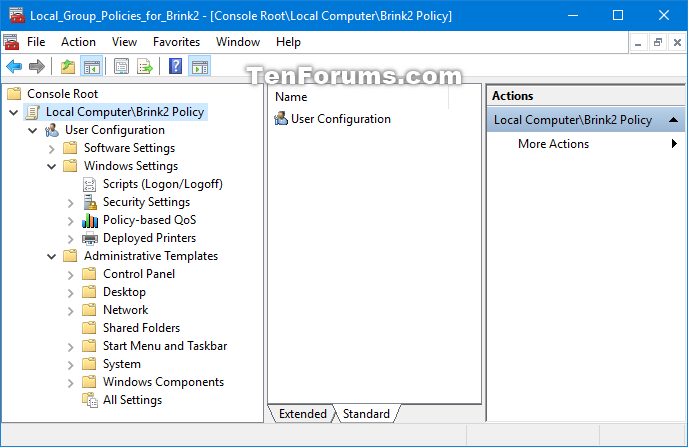
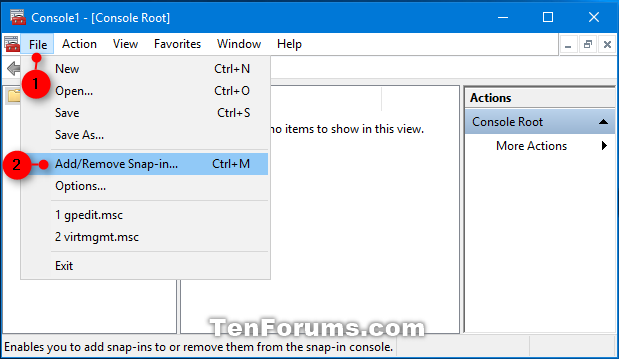
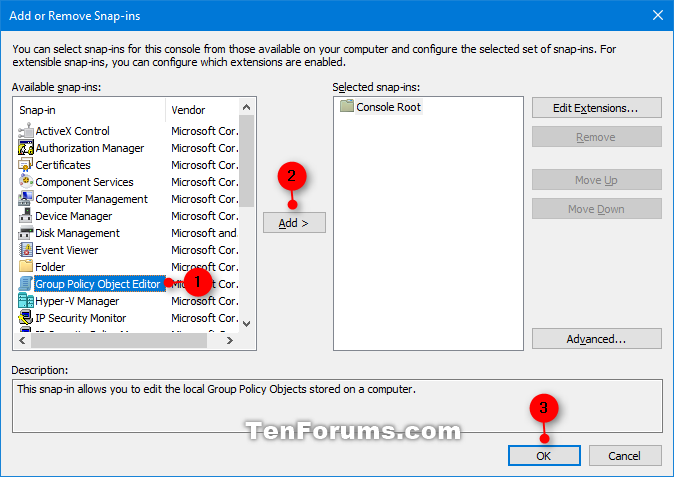
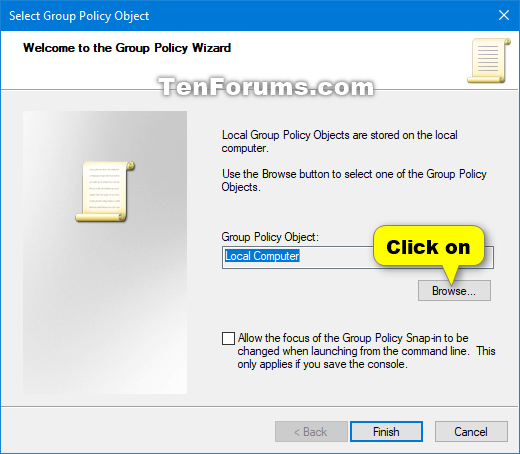

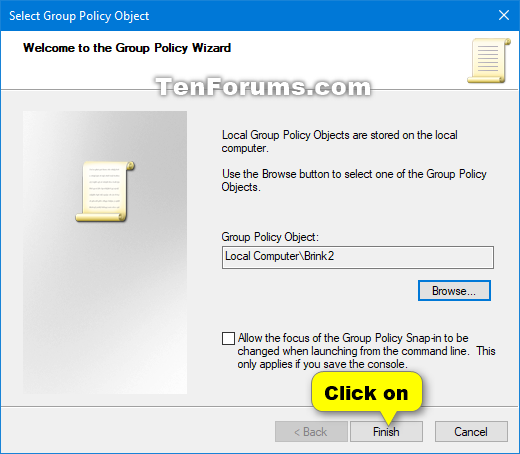
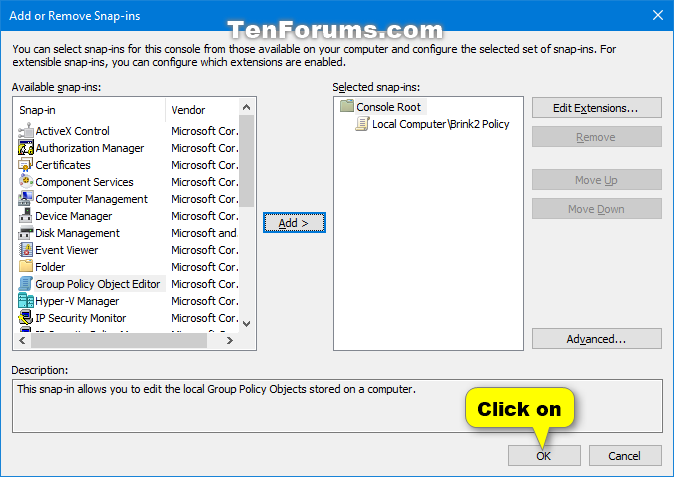
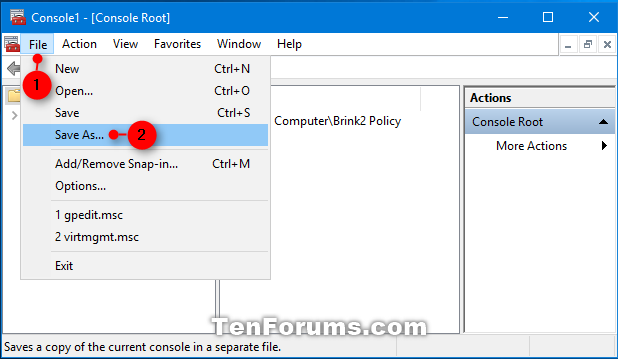


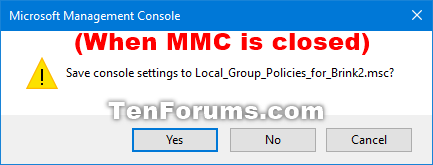

 Quote
Quote
